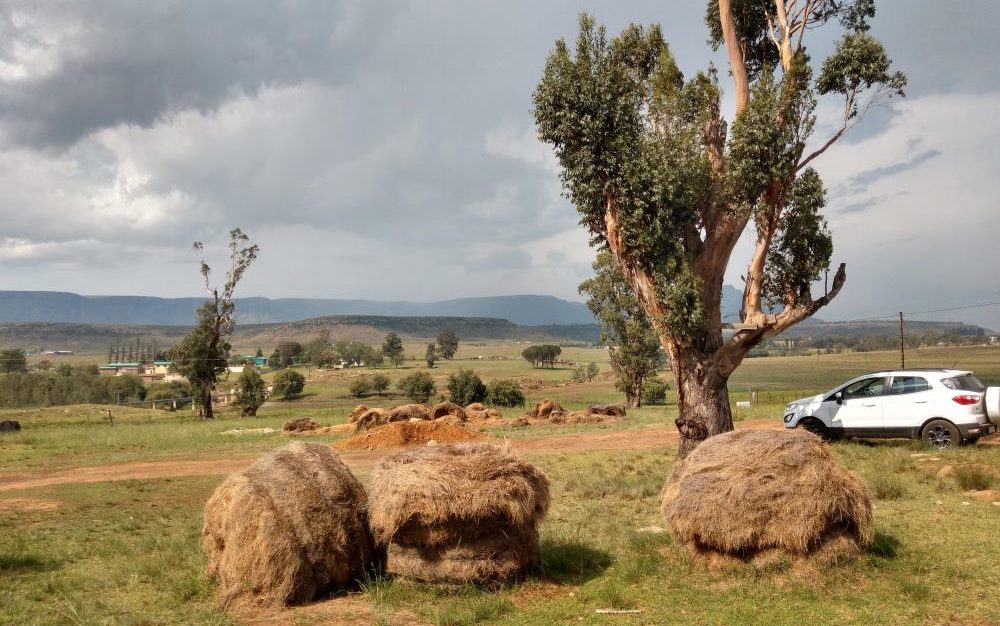by Sylvia Vetter and Pete Smith
Greenhouse gas (GHG) emissions are a major driver of climate change. GHGs emitted from the food system, including crop and livestock production, forestry and associated land-use changes, account for up to one-third of global GHG emissions (1).
Besides carbon dioxide (CO2), agriculture emits large amounts of the non-CO2 GHGs nitrous oxide (N2O) and methane (CH4). N2O and CH4 have a higher global warming potential (298 and 25 times, respectively) than CO2 and, therefore, contribute significantly to overall emissions even in small amounts. CO2 is emitted from microbial decay or burning of plant litter and soil organic matter, CH4 is produced from fermentative digestion by ruminant livestock, stored manures and rice grown under flooded conditions and N2O is mainly released by the microbial transformation of nitrogen in soils and manures 7(2).
In addition, soils are depleted of their SOC stocks through agricultural production and typically lose ~30%–50% of their topsoil carbon (C) stock before reaching a new C equilibrium when converted from native ecosystems to agricultural land (3).
GHG emissions from agricultural activities are complex, but they can be reduced. On-farm carbon sequestration is one possible measure of reducing the net GHG balance or agriculture. Applied to these agricultural soils, improved soil management can be seen as a greenhouse gas removal option, as this can significantly reduce GHG emissions and sequester CO2 from the atmosphere as C in soil organic matter (SOM). At the same time, improved management helps keep C stored as SOC by reducing losses to the atmosphere through decomposition. Moreover, improved soil management can help enhance soil fertility and productivity, increase soil biodiversity, reduce erosion, runoff and water pollution, increase the resilience of crop and pasture systems against climate change, and provide a way to increase food security (4,5).

In AFRICAP, GHG emissions and SOC changes of crop and livestock production were simulated with the model ECOSSE for the African countries Malawi, South Africa, Tanzania and Zambia. The ECOSSE model (Estimating Carbon in Organic Soils – Sequestration and Emissions) was developed to simulate soil carbon and nitrogen dynamics in mineral and organic soils (6,7). Based on the stakeholder workshops, four future scenarios were developed for the period to 2050, considering two key drivers of change to the food system’s future in the four countries: climate change risk and the extent of land reform.
Results show the impact of the changing climate for the scenarios with little change in management with increasing GHG emissions and reduced SOC stocks for the future. Land reforms to increase food production can have diverse impacts on the GHG emissions and C balance as the amount of carbon inputs to the soil play a significant role as well as the type of increased production. For example, increasing livestock production and expanding pastures will lead to higher organic material inputs to the soil and increase SOC but also increase CH4 emissions from ruminants through enteric fermentation. On the other hand, extending crop production through increased fertilizer inputs and higher irrigation rates will increase GHG emissions in the form of N2O emissions and C inputs to the soil.
In general, the land use and management before the proposed scenario change plays a major role in the GHG balance and determines if a new measure will reduce or increase net GHG emissions. For example, a change from natural ecosystems to agricultural land or pastures will increase emissions and negatively impact SOC, but a change from agricultural soils to pastures will improve SOC stocks.
Adopting climate-smart agriculture practices for improving agricultural production and increasing mitigation impacts will be essential in all scenarios to ensure productivity and food security for the countries.
References
(1) IPCC. Climate Change 2014: Mitigation of Climate Change. Contribution of Working Group III to the Fifth Assessment Report of the Intergovernmental Panel on Climate Change [Edenhofer, O., R. Pichs-Madruga, Y. Sokona, E. Farahani, S. Kadner, K. Seyboth, A. Adler, I. Baum, S. Brunner, P. Eickemeier, B. Kriemann, J. Savolainen, S. Schlömer, C. von Stechow, T. Zwickel and J.C.Minx (eds.)]. 2014.
(2) Smith P, Martino D, Cai Z, Gwary D, Janzen H, Kumar P, et al. Greenhouse gas mitigation in agriculture. Philosophical Transactions of the Royal Society B: Biological Sciences 2008 February 27;363(1492):789-813.
(3) Ogle SM, Breidt FJ, Paustian K. Agricultural management impacts on soil organic carbon storage under moist and dry climatic conditions of temperate and tropical regions. Biogeochemistry 2005;72(1):87-121.
(4) Paustian K, Lehmann J, Ogle S, Ready D, Robertson GP, Smith P. Climate-smart soils. Nature 2016;532:49.
(5) Smith P. Soils and climate change. Current Opinion in Environmental Sustainability 2012;4(5):539-544.
(6) Smith J, Gottschalk P, Bellarby J, Chapman S, Lilly A, Towers W, et al. Estimating changes in Scottish soil carbon stocks using ECOSSE. I. Model description and uncertainties. Clim Res 2010;45:179-192.
(7) Smith J, Gottschalk P, Bellarby J, Chapman S, Lilly A, Towers W, et al. Estimating changes in Scottish soil carbon stocks using ECOSSE. II. Application. Clim Res 2010;45:193-205.
